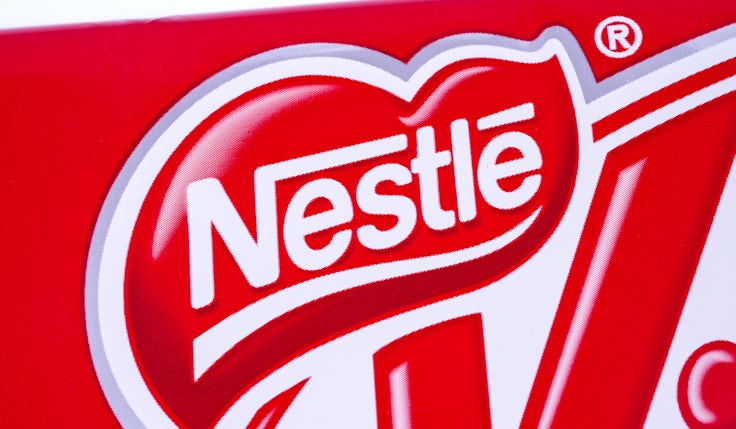Marketing budgets get unexpected boost despite economic uncertainty
A net balance of 14.7% of companies made upward revisions to their marketing budgets in the fourth quarter of 2023, the highest recorded by Bellwether in nearly a decade, despite the challenging economic environment.
 Many businesses rallied at the end of the year to increase their marketing budgets despite the uncertain economic environment.
Many businesses rallied at the end of the year to increase their marketing budgets despite the uncertain economic environment.
The latest IPA Bellwether report finds the majority of businesses opted to step up their investment in marketing in the fourth quarter. Over one quarter (26%) of businesses report an upward revision of spend in the fourth quarter. By contrast, only around one in 10 (11.3%) report saw budgets decrease in the final three months of the year.
This means a net balance of 14.7% of businesses made upward revisions to marketing spend in the fourth quarter of 2023. This net balance total is the highest recorded by the Bellwether report since the second quarter of 2014.
The report does not record to what extent businesses revised marketing spend, or account for adjustments made with inflation.
Bellwether co-authors S&P Global present a rather lacklustre forecast for the year ahead, forecasting that the UK has begun the year in a “shallow recession”. Forecasts for gross domestic product (GDP) across the year remains unchanged and is expected to decline by 0.1% across 2024.
This lacklustre macroeconomic backdrop will have translated to real terms decline in advertising spend in both 2023 and 2024, forecasts S&P Global. It estimates real term ad spend declined 0.6% in both 2023 and will decline 0.7% this year.

Despite these forecasts, businesses remain optimistic about their ability and propensity to invest in advertising this year. Almost half (44.5%) indicate they plan to expand their marketing budgets for the 2024/25 period, compared to just 15.1% that say they intend to cut investment.
Respondents are also generally more optimistic about the prospects for their own companies. Almost one third (32.4%) of respondents say they are more optimistic about the financial prospects of their own businesses compared to three months ago.
Around one in five (19.8%) companies surveyed are more pessimistic about their financial prospects versus three months prior. That equates to a net balance of 12.6% of companies feeling optimistic about their own prospects. This is the highest balance since the third quarter of 2021.
“The resilience of UK marketing continues to be at odds with the worsening economic climate businesses are facing,” says S&P Global Market Intelligence principal economist Joe Hayes. “Instead, companies are demonstrating the foresight to maintain a long term view towards their brands, maintaining a healthy level of investment in the tools to stave off competition, retain clients and win new business.”
By contrast to optimism about their own prospects, businesses are generally feeling pretty pessimistic about the prospects for the industries they operate in. Over a quarter (26.5%) of respondents feel less optimistic about the prospects for their industry than they did three months before. That figure more than offsets the proportion that feel positive (13.8%), meaning a net balance of 12.7% are more pessimistic than they were three months ago.
The net balance of respondents swinging towards pessimism has remained constant from quarter three (12.7%) and quarter two (12.6%). Overall, industry-wide sentiment has now been stuck in firmly negative territory for over two years.
Businesses urged to invest in advertising over price cuts
Events was the best-performing sub-category of marketing in the final quarter of 2023, with a net balance of 15.9% of businesses indicating they upwardly revised their budgets for events.
Direct marketing was another category that saw a noticeable uptick of businesses increasing their budgets in the area. A net balance of 12.6% of companies indicate they upwardly revised spending in the area. This is the highest positive balance for the category since the first quarter of 2005.
More modest positive net balances were seen in the PR (1.9%) and sales promotions (1.4%) sub-categories. The main media category, which spans TV, online and out of home advertising, saw only a modest net balance growth of 1.9% in the fourth quarter.
A net balance of 6.4% of companies cut their “other” marketing budget, which covers activities outside of the main six sub-categories. Businesses are also cutting their market research budgets, Bellwether suggests, with a net balance of 5% of companies downgrading investment in this area in the fourth quarter.
What does the future hold for market research?
Bellwether also asks respondents about their budgeting intentions for 2024/25.
Companies indicated they intend to step up 2024/25 investment in five of the seven sub-categories. Events in the area of strongest optimistic sentiment, with 17.8% of companies indicating they intend to invest here. As in quarter four 2023, a strong positive net balance (16.8%) of businesses also intend to invest in direct marketing.
While main media only saw modest upward revisions in the most recent quarter, there is stronger positive sentiment towards this category for the future. A net balance of 14.2% of firms indicate they intend to step up main media budgets in the coming year.
Meanwhile, PR and sales promotions saw net positive balances of 10.6% and 8.2%, respectively.
Market research is the only category where more respondents reported plans to cut budget than increase spend in the category. A net balance of 1.0% of businesses indicate they will cut market research budgets in 2024/25.
IPA director general Paul Bainsfair says the upbeat quarter four Bellwether suggests that companies are “heeding the evidence” around the benefits of advertising for the long-term health of a business.
“However, we also saw anecdotal feedback that some companies noted plans to price their goods and services more competitively in a bid to gain market share. While this is good news for the consumer, it is further proof that companies are experiencing a tough trading environment,” he comments.
“On this point, with the evidence showing that investing in advertising helps protect sales when businesses raise prices, it may prove more profitable for companies to increase their advertising than reduce their pricing.”







